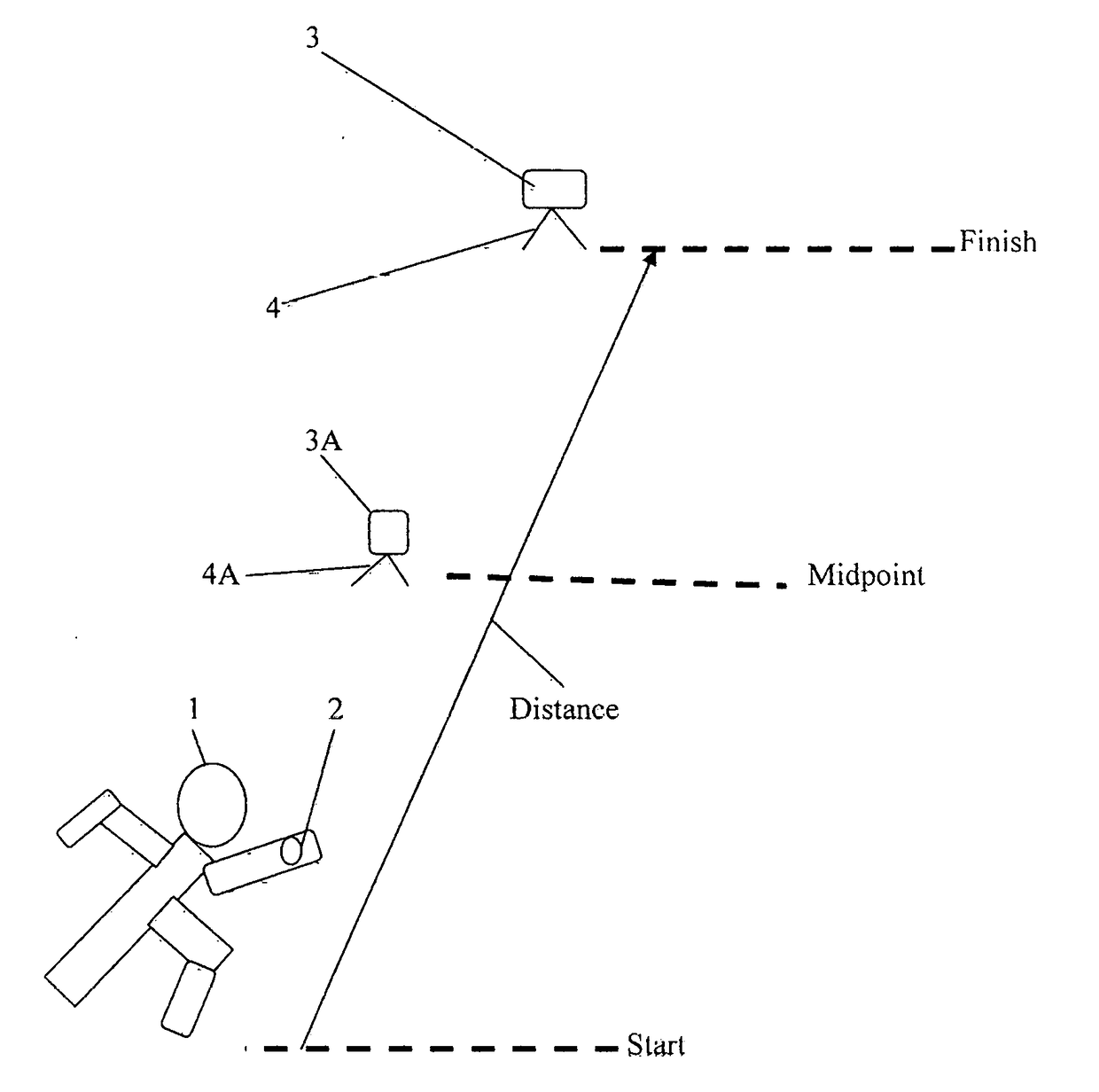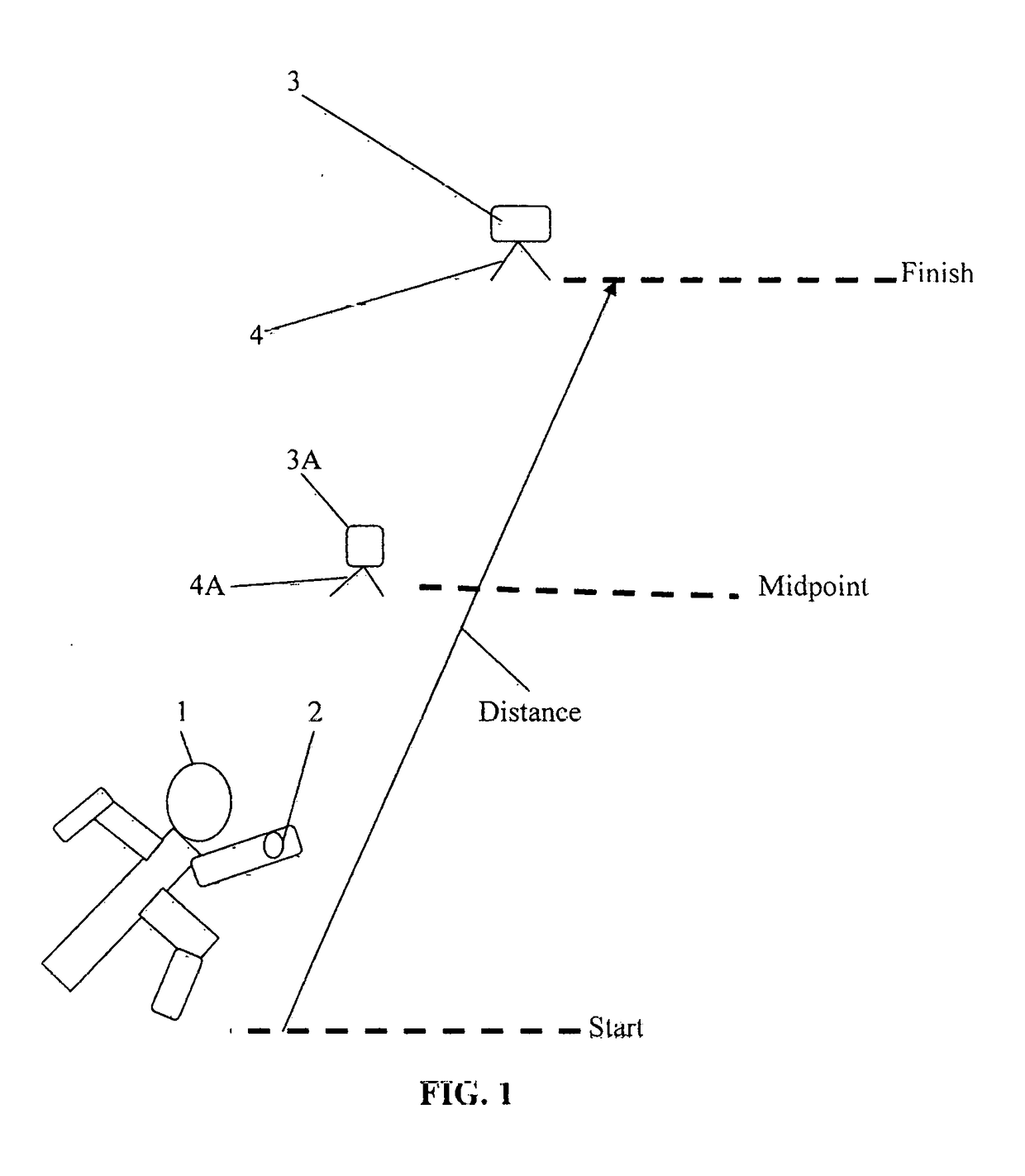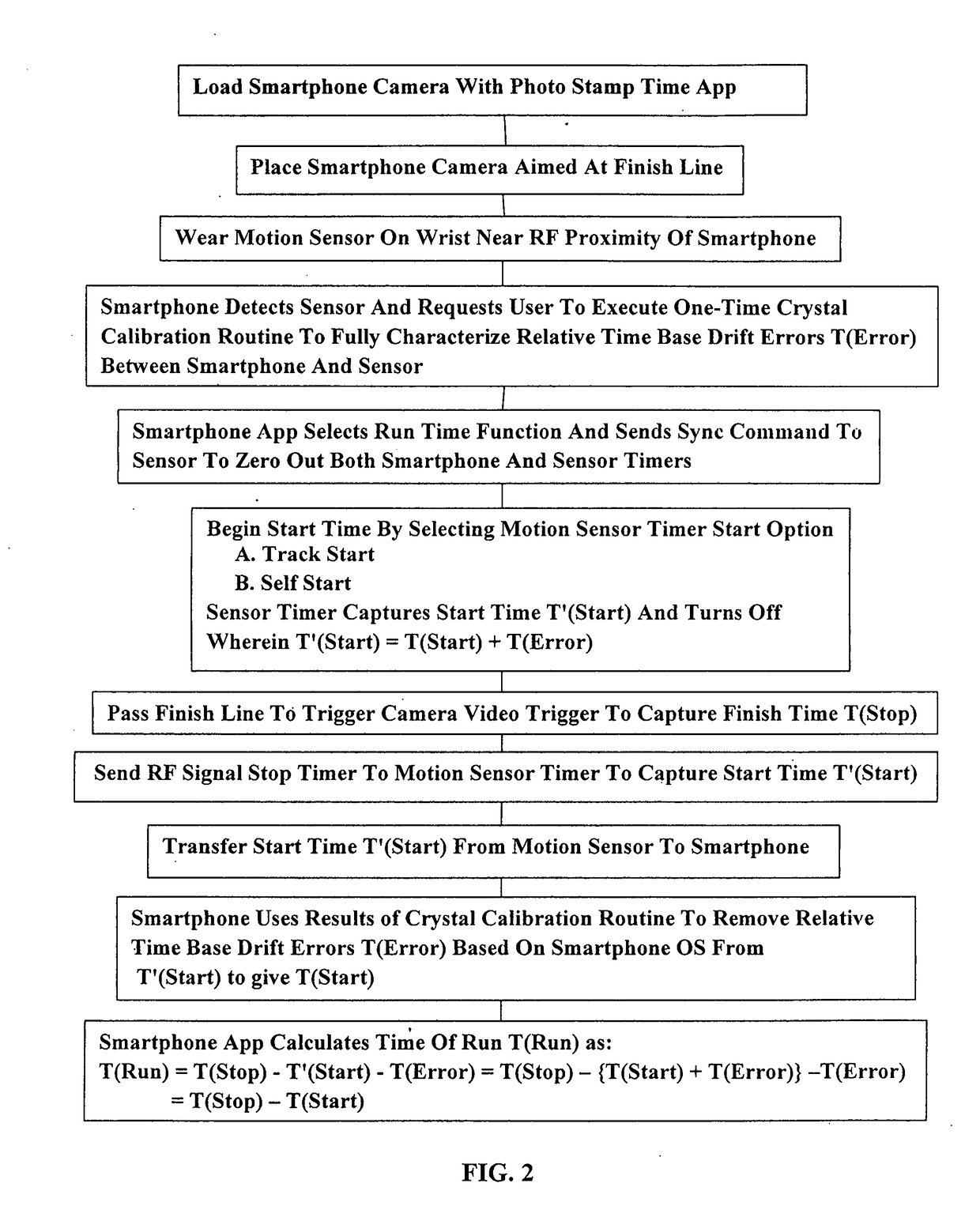Camera-Biometric motion sensor and method of synchronization
a biometric and motion sensor technology, applied in the field of camerabiometric motion sensor and method of synchronization, can solve the problems of inability to synchronize the time base of smartphones and the motion sensor for 400 ms uncertainty or delay, and achieve the effect of saving the time valu
- Summary
- Abstract
- Description
- Claims
- Application Information
AI Technical Summary
Benefits of technology
Problems solved by technology
Method used
Image
Examples
Embodiment Construction
[0012]Referring to FIG. 1, an athlete 1, wearing a motion sensor 2 on a wrist is starting to traverse a premeasured or predetermined distance, such as a 40 yard sprint. The athlete has previously prepositioned a smart device, such as a smartphone 3, on a tripod 4. The motion sensor 2 is a 6-DOF mems more fully explained in the previously referenced U.S. patent application Ser. No. 14 / 121,226. In the art, the term “6-DOF” refers to six degrees of freedom represented by the x, y, and z axis of movements. The term “mems” refers to miniature electrical mechanical systems. The motion parameters are sensed using an acceleration sensor and gyroscope sensor for each axis which acceleration sensors and gyroscope sensors are integrated in the motion sensor.
[0013]Referring to FIG. 2, a photo stamp time app is loaded into the smartphone to capture the finish time when the athlete crosses the finish line. The smartphone 3 has a camera which is aligned with the finish line of the predetermined di...
PUM
 Login to View More
Login to View More Abstract
Description
Claims
Application Information
 Login to View More
Login to View More - R&D
- Intellectual Property
- Life Sciences
- Materials
- Tech Scout
- Unparalleled Data Quality
- Higher Quality Content
- 60% Fewer Hallucinations
Browse by: Latest US Patents, China's latest patents, Technical Efficacy Thesaurus, Application Domain, Technology Topic, Popular Technical Reports.
© 2025 PatSnap. All rights reserved.Legal|Privacy policy|Modern Slavery Act Transparency Statement|Sitemap|About US| Contact US: help@patsnap.com



